16 most beautiful pictures of the universe
16 most beautiful pictures of the universe
For hundreds of years, the mysteries of the universe remained big questions for scientists because outer space could only be observed from Earth.
Here are beautiful photos taken of our wondrous universe.

Have you ever seen such a colorful lagoon? To celebrate its 28th birthday, Hubble captured this colorful picture of a glowing cloud of interstellar gas in the Lagoon Nebula (the lagoon).
This nebula lies 4,000 light-years away, itself a giant gas cloud when it spans 50 light-years and is 20 light-years high in actual space. However, this frame only cuts a part of the giant cloud, the part of the image you are looking at is only about 4 light years wide.
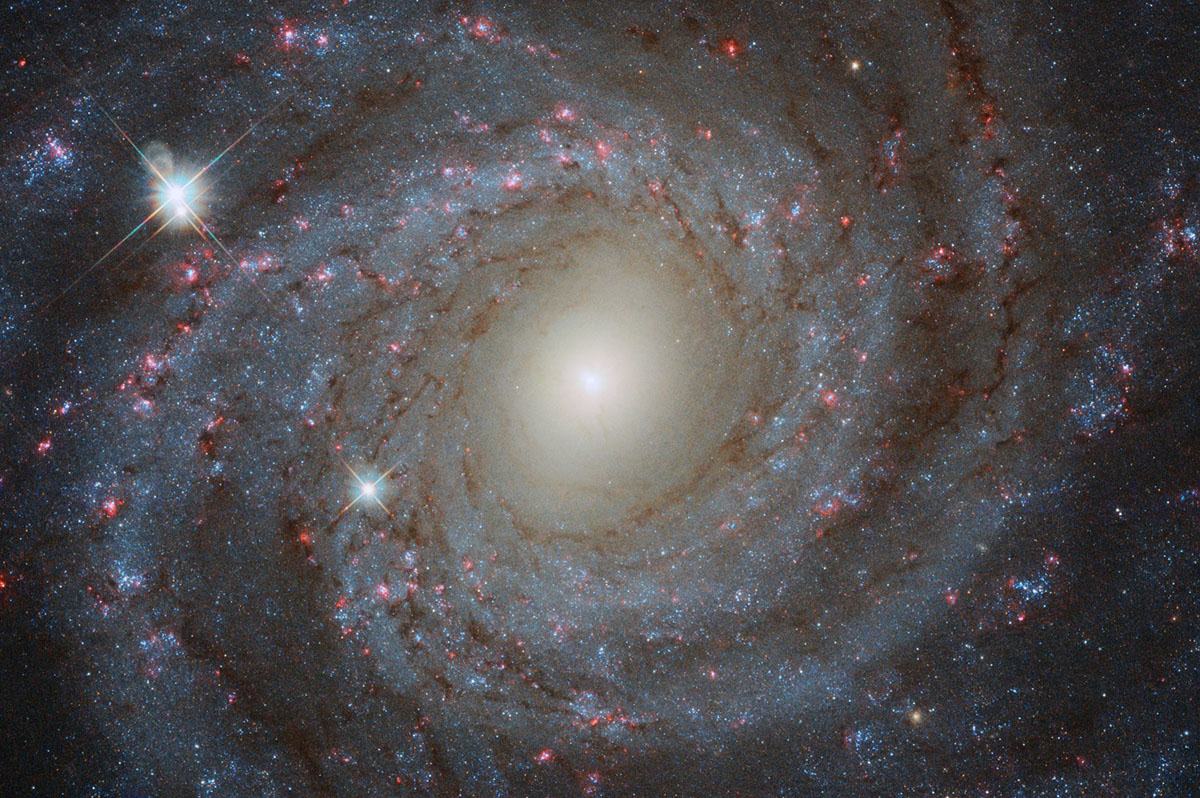
Next, invites you to a whirlpool located far away in the universe. This is an image looking directly at the galaxy NGC 3344, a spiral galaxy lies our Earth about 20 million light years. This galaxy is only half the size of our Milky Way, it is located in the constellation Leo Minor.
This image is not simply a snapshot, but it is taken over many different wavelengths of light, from ultraviolet to optical and near-infrared light, and then superimposed on the images. together to get the same end result. This process was carried out over several days of February 2018.
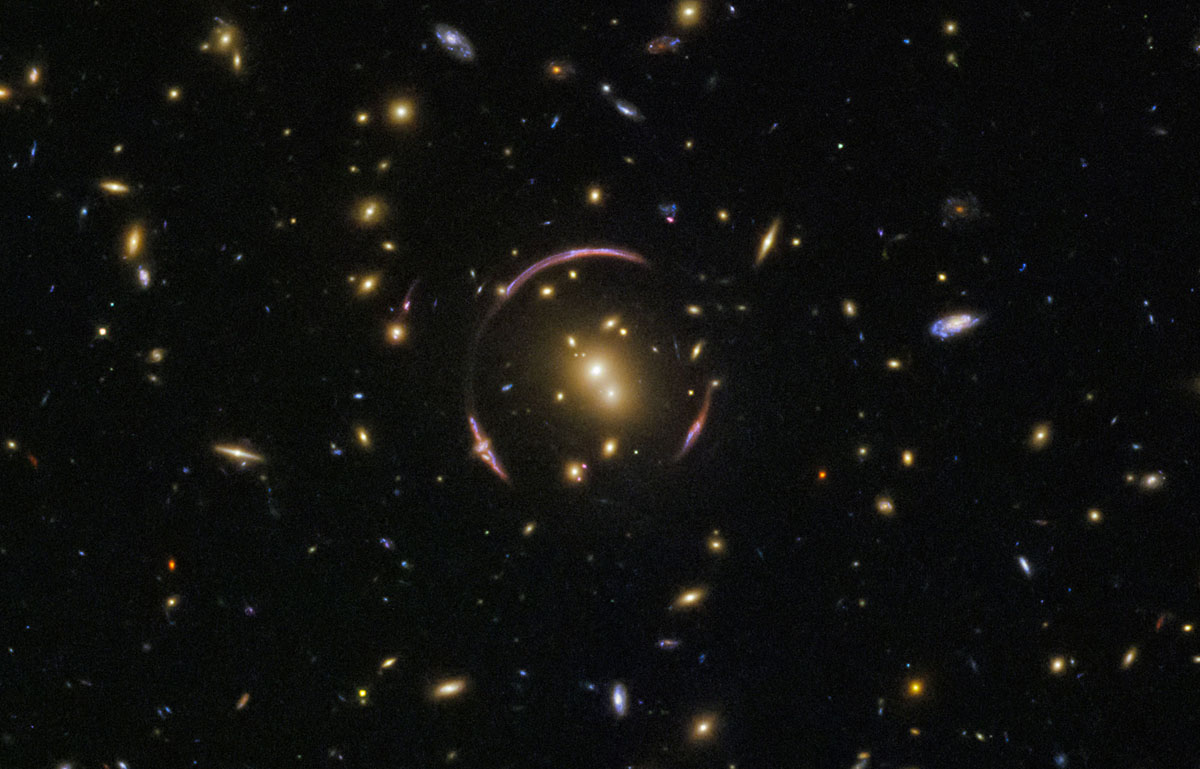
Look here, a giant Einstein Ring. In the center of this image, where the image is enlarged, is the galaxy cluster SDSSJ0146-0929, a collection of hundreds of different large and small galaxies. Because of the concentration of galaxies, this cluster has so much mass that it distorts the space-time around it, creating a strange circle in the center of this image.
These graceful circles are a visual example of a cosmic phenomenon known as Einstein's Ring, whereby light is bent when it passes through an extremely massive object. Here, light from more distant galaxies was bent as it passed through the massive cluster of galaxies before reaching the human eye on Earth.
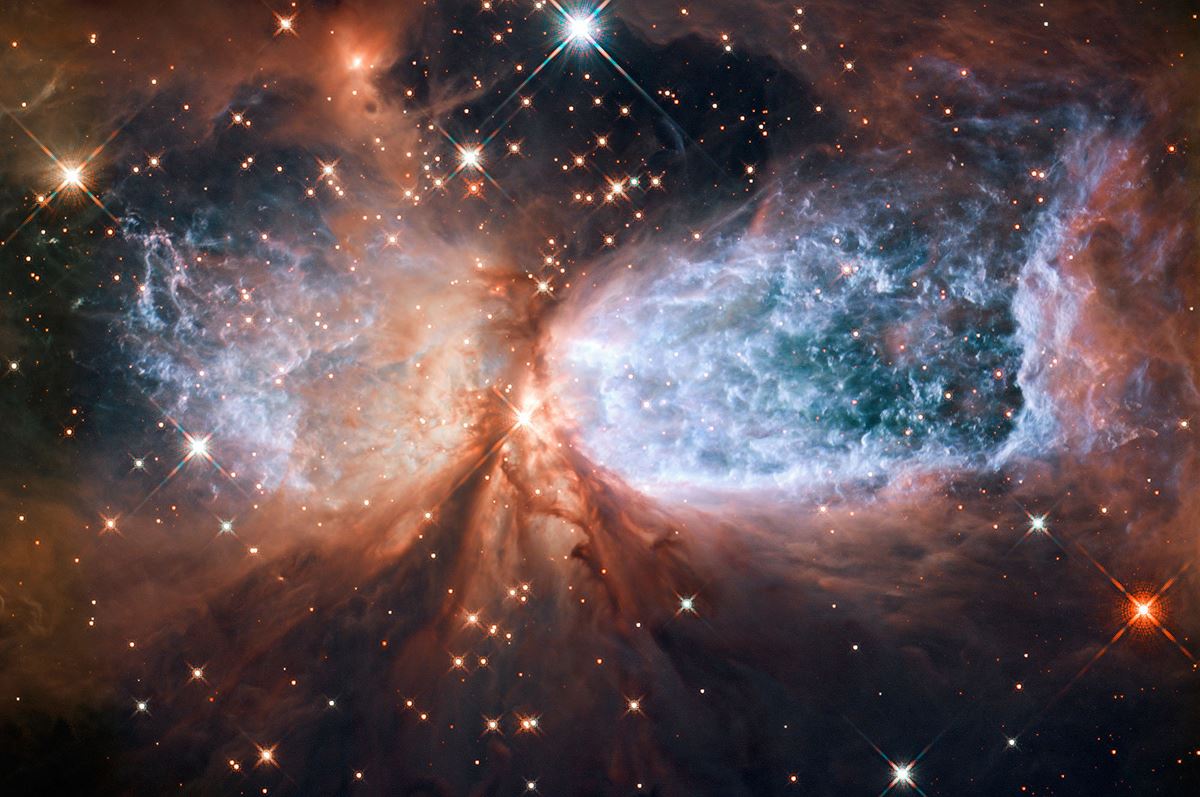
In this Hubble image, you can see a small star-forming region known as S106 in the region of the constellation Cygnus, located about 3,300 light-years from Earth.
There is a newly formed star, very young and very bright. This star, called S106 IR, is hidden behind the dust column in the center of the image. Although you can't see the star directly, you can see its light illuminating its surroundings. The blue light shows that the region is rich in hydrogen gas.
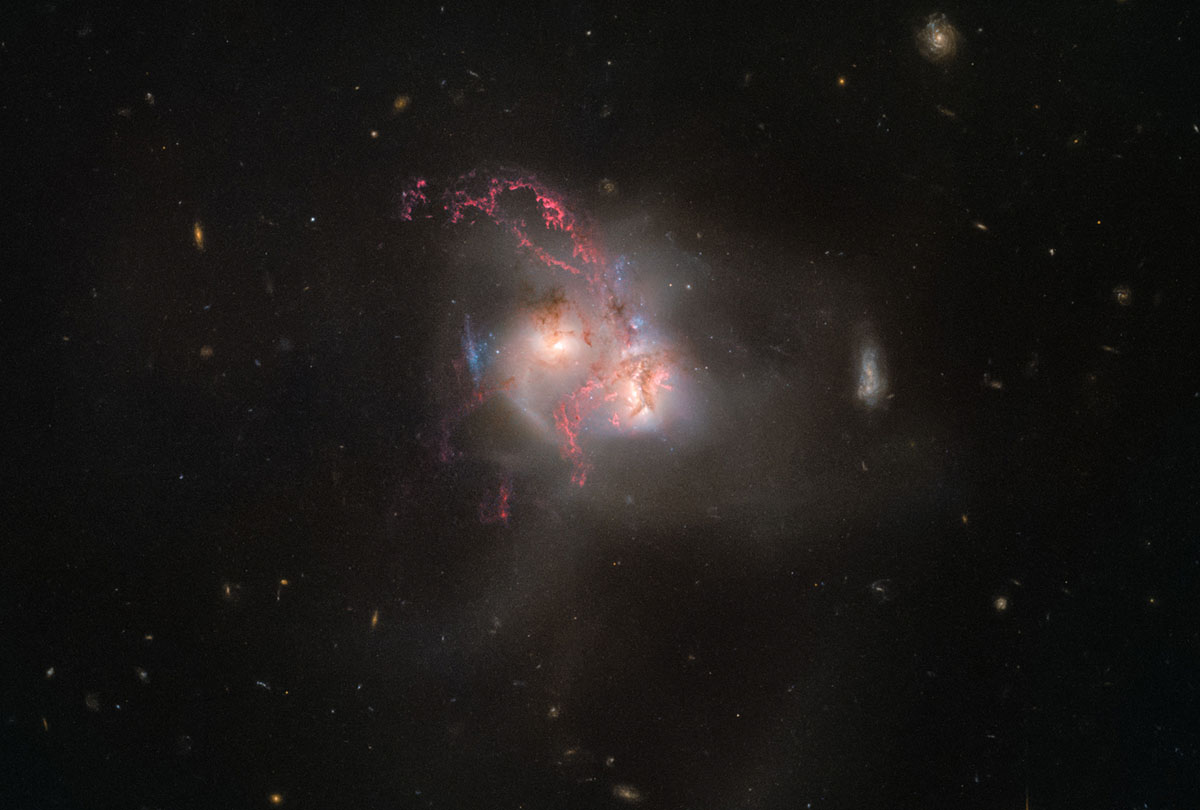
You are witnessing a collision between two galaxies. NGC 5256 or Markarian 266, is the common name for this ill-fated pair of galaxies. Located 350 million light-years from Earth, these two galaxies are still in the process of merging, so their cores are still approaching.
Currently, the two cores of the two galaxies are separated by 13,000 light-years. The fusion process pushes the dust and matter of both to fly wildly in all directions. This matter, when transported to other places, quickly forms star-forming regions and gives birth to new stars. Despite the hectic merger process, the stars will be difficult, if not impossible, to collide due to the great distance between them.
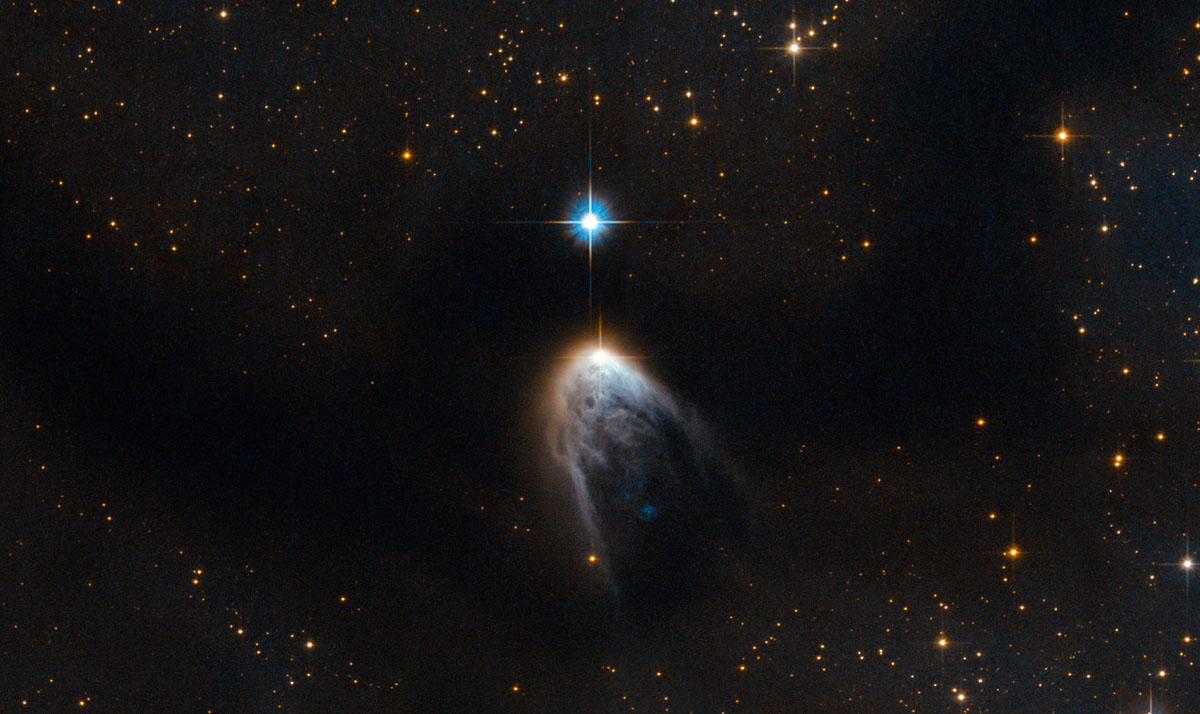
The young star IRAS 14568-6304 in the center of this image appears to be guiding the dense cloud of gas surrounding it. A thick layer of dust and gas partially obscures the star, causing its light to radiate a yellow color around it.
That dark cloud is the Circinus Molecular Cloud, an object 250,000 times more massive than the Sun. This cloud is filled with gas, dust, and young stars inside. The star IRAS 14568-6304 literally drives the molecular cloud because the material left over from its creation is part of the dark cloud.
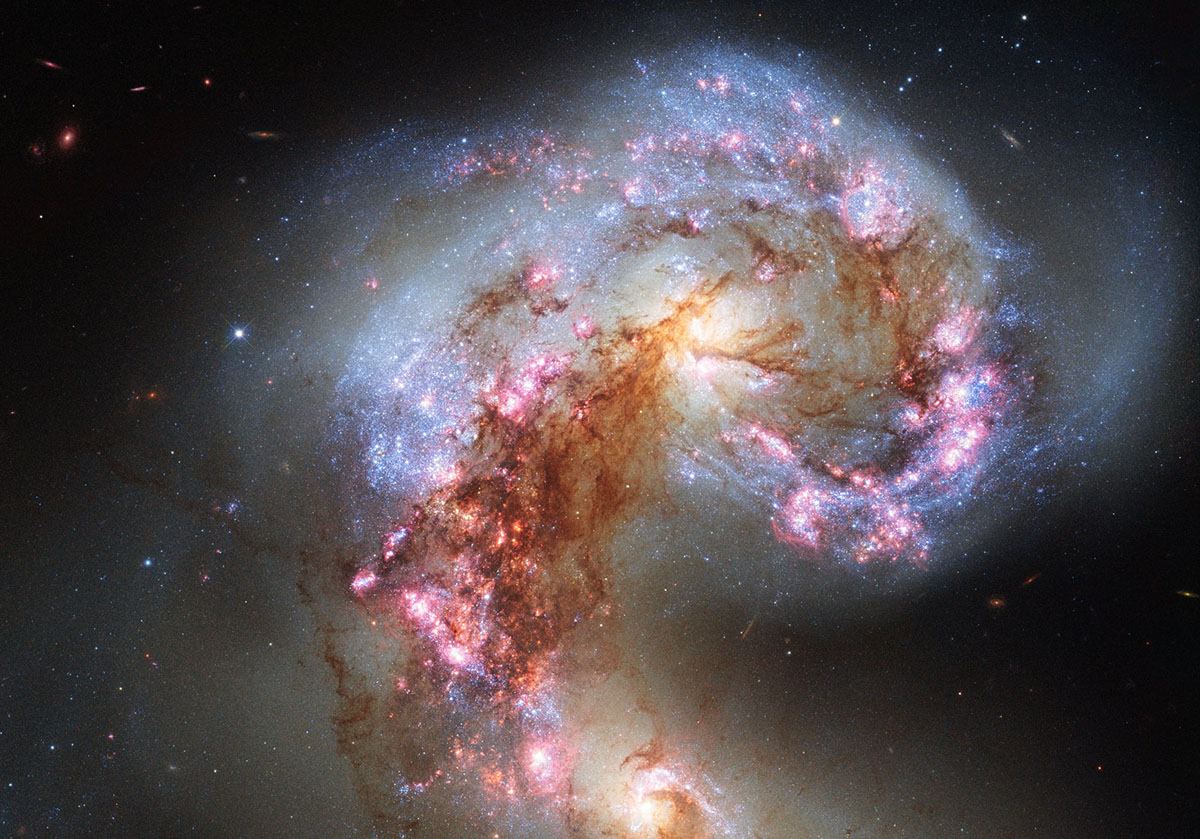
Pictured here are two galaxies collectively known as the Antennae Galaxy, which are also a pair of galaxies that are merging. One of them is a spiral galaxy like our own Milky Way, the other is a regular galaxy, they have collided like this for hundreds of millions of years.
This interaction tore apart their original structure, sending stars and matter squirming around, creating an interweaving flow of matter between the two galaxies. The gas clouds are pink-red, surrounded by star-forming regions with a characteristic green color and scattered with a few obscure clouds of dark gas. This spectacular cosmic dance lies 65 million light-years away, in the region of the constellation Corvus.

The Boomerang Nebula is present in front of you right now. Located 5,000 light-years away, it is a highly reflective cloud of dust and gas with two roughly symmetrical 'lobes' of matter, ejected from a central star. Because of this shape, it is sometimes called the Bow Nebula.
Each such lobe of the nebula is 1 light-year in length. The flow of matter on each side is still expanding at an extremely high rate. Not only that, this place is also said to be the coldest point in the universe with a temperature as low as minus 272 degrees Celsius, only 1 degree higher than absolute zero.
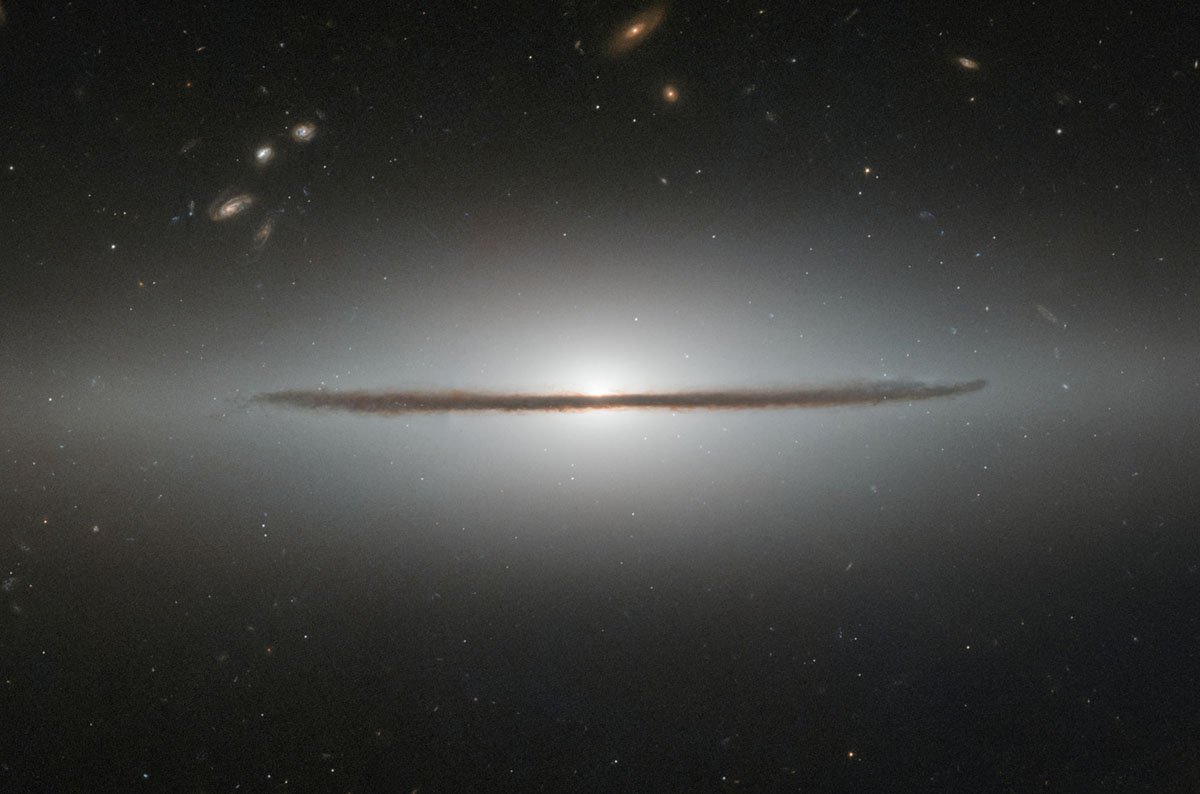
Here's a straight look at the edge of a galaxy. Spiral galaxy NGC 1032 is located about 1 million light-years away in the constellation Cetus region. Due to the direction from the Earth, we can only see its edge.
But thanks to such a perspective, we can discover a lot about this galaxy. The dark giant galactic disk is surrounded by a very large halo. The core of this galaxy is not bulging, but flattened like a flat disk. From different perspectives in different galaxies, astronomers can study more closely the types of galaxies in the universe.

Let's expand our horizons with the Heart of (Nebula) Crab. Messier 1 or the Crab Nebula is one of the most famous celestial objects in the sky, whether it is known to anyone, whether it is sky lovers or professional astronomers.
Located 6,500 light-years away, the core of this nebula looks like a real crab's heart, where it 'blows' out radiation about 30 times per second. Astronomers discovered that this core is crushing an exploding star, also known as a neutron star, with an extremely fast spin on its own axis. This image, taken by the Hubble telescope, shows the area around that neutron star receiving powerful waves of energy ejected from the debris of the supernova explosion.
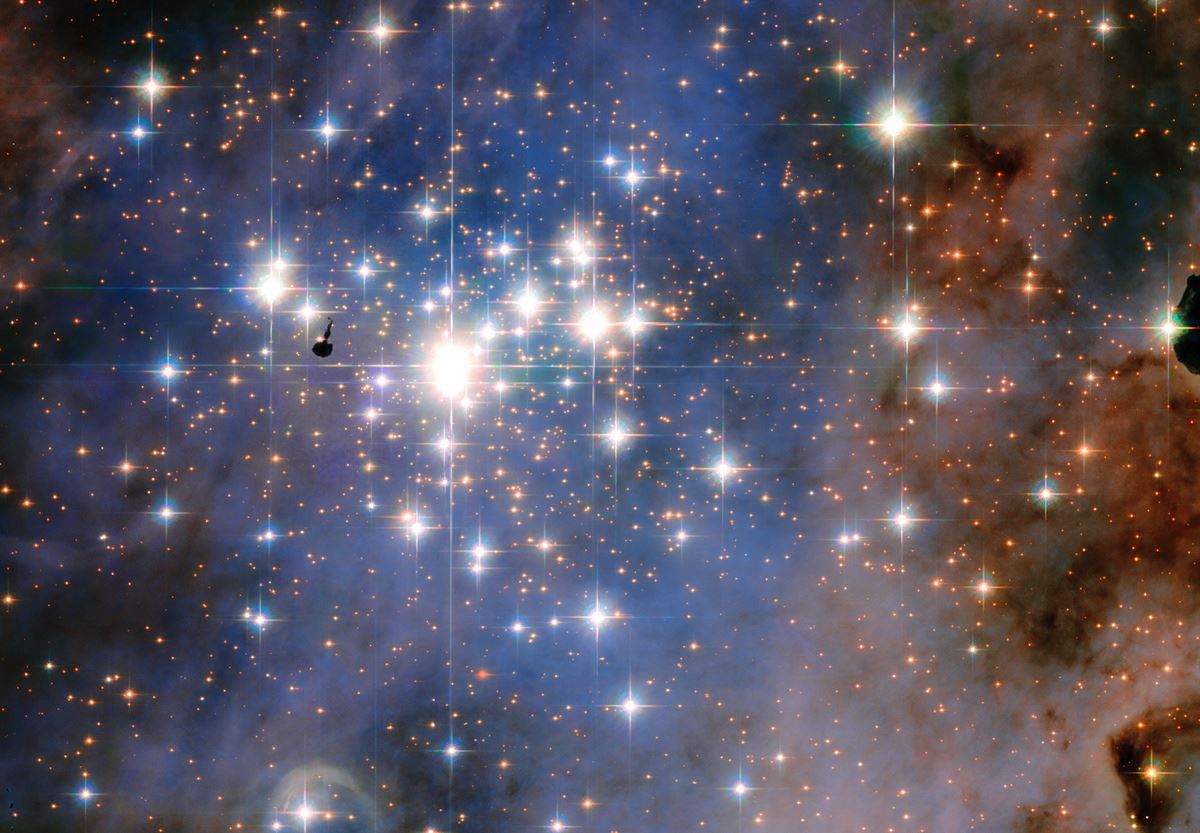
Youth is passionate, and this is a very active cluster because they are so young. At puberty, this cluster is only about 500,000 years old. Called Trumpler 14, this cluster is a collection of the hottest, largest, brightest stars in our Milky Way galaxy.
This open cluster not only contains stars, it also contains stellar nurseries - places filled with dense clouds of dust and gas ready to provide the material to create a new star. The entire population of stars you're looking at lies about 8,000 light-years away, in the region of the Carina Nebula, much larger than its outer shell.

Next in the journey, invite you to stop at the dusty giant spiral. Here's another head-to-head view of a galaxy: Spiral Galaxy NGC 4911, surrounded by long dark bands of dust and gas, lies deep within the Coma Cluster, 320 million light-years away.
The dark spiral arms appear in contrast to the bright gas clouds inside as well as the brilliant pink clouds of hydrogen gas. This embodiment shows that there is strong star formation going on here. But if you take a closer look, you'll notice its other spiral arms are fainter on the outside.
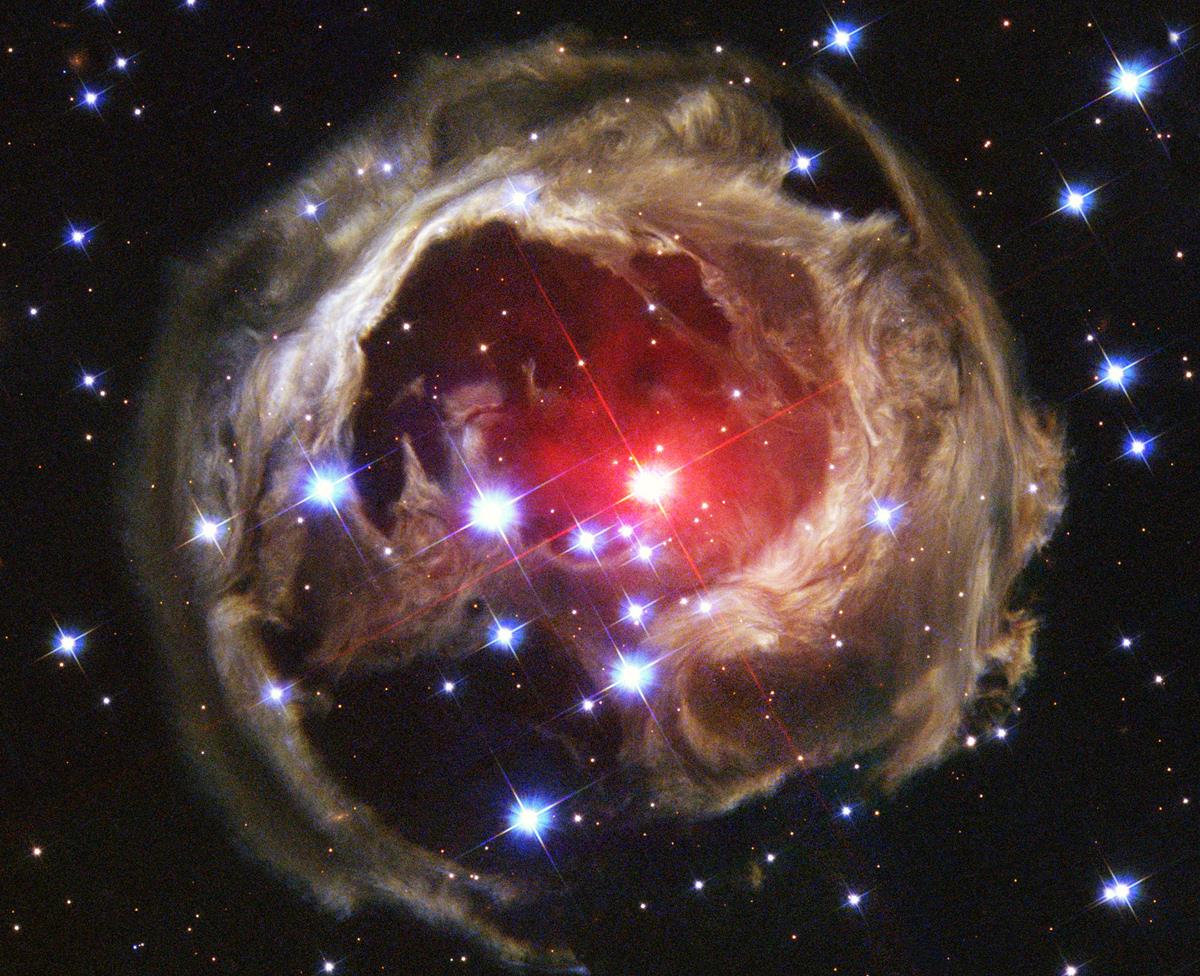
Is this a nest filled with the light of the universe? Maybe, but it's actually V838 Monocerotis, an expanding halo of gas surrounding a cluster of stars, the light from the central stars illuminating the gas.
Most of the light here comes from the central red supergiant star, which emitted a flickering pulse of light that reached Earth in 2002. This image was taken by Hubble in 2004. , which is 2 years since we received the first ray of light from it.
V838 Monocerotis is located 20,000 light-years away in the direction of the constellation Monoceros, its position at the edge of the Milky Way.
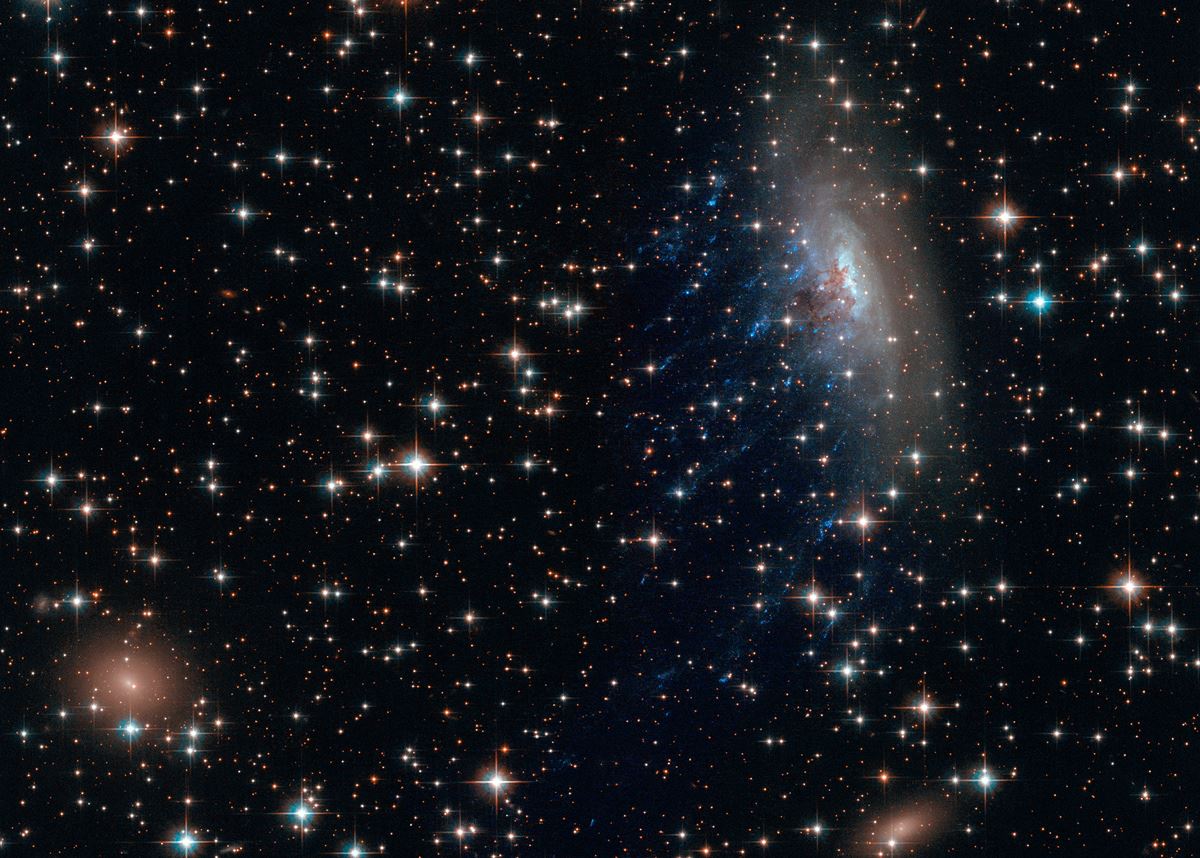
Somewhere 200 million light-years away, the spiral galaxy ESO 137-001 looks like a giant spinner in the universe. The galaxy rotates on its own axis and moves to its right at 7.2 million kilometers per hour.
Most recently, ESO 137-001 passed through a region filled with hot gas in the intergalactic medium and sucked up some of the dust and gas from another galaxy, creating star-forming regions (bands of colored gas and dust). blue) and stellar dust (faint clouds of gas at the galactic core).
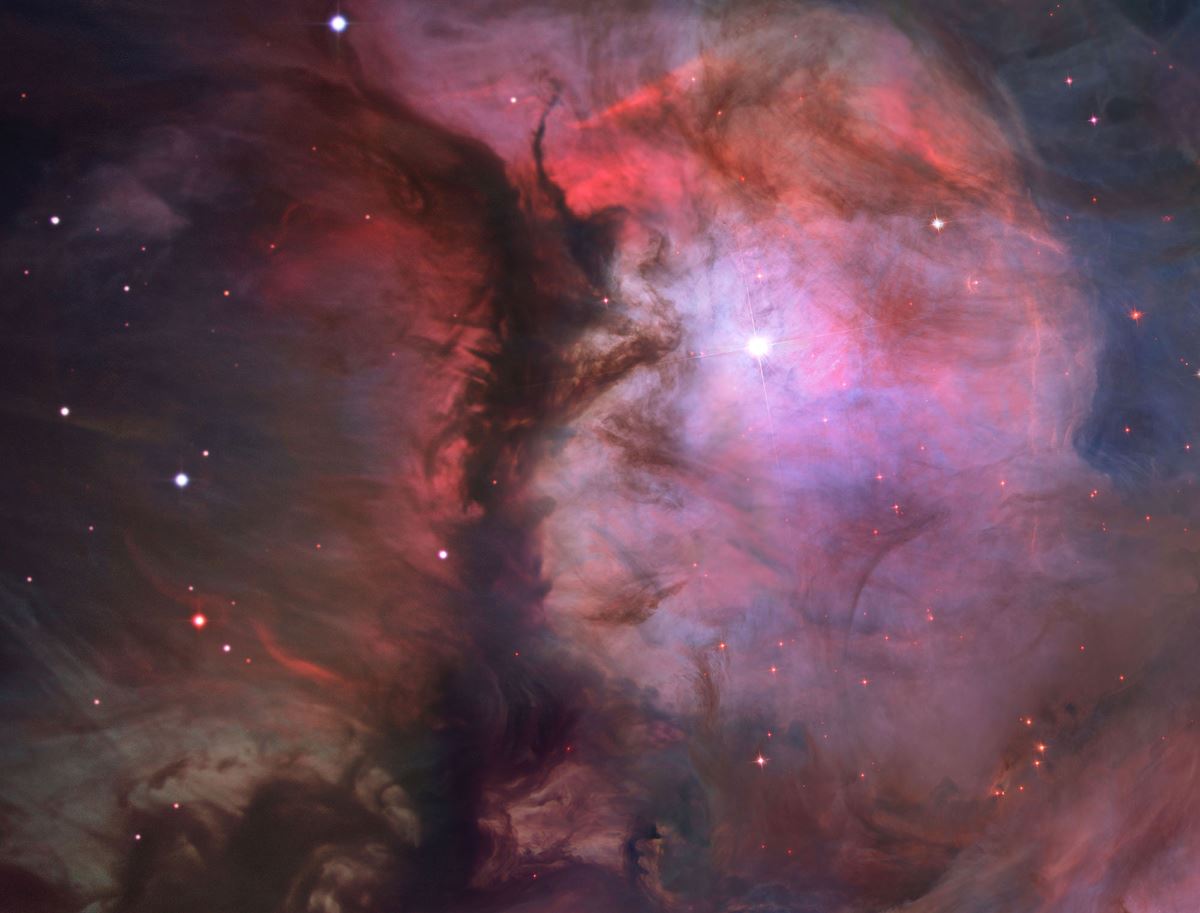
Inside the Orion Nebula – one of the most famous star nurseries in the sky – is a heartbreakingly beautiful sculpture of mother nature. Called Messier 43 or the Orion Nebula in miniature, this entire region of gas and dust is lit up by a single star. M43 is located 1,600 light-years away.
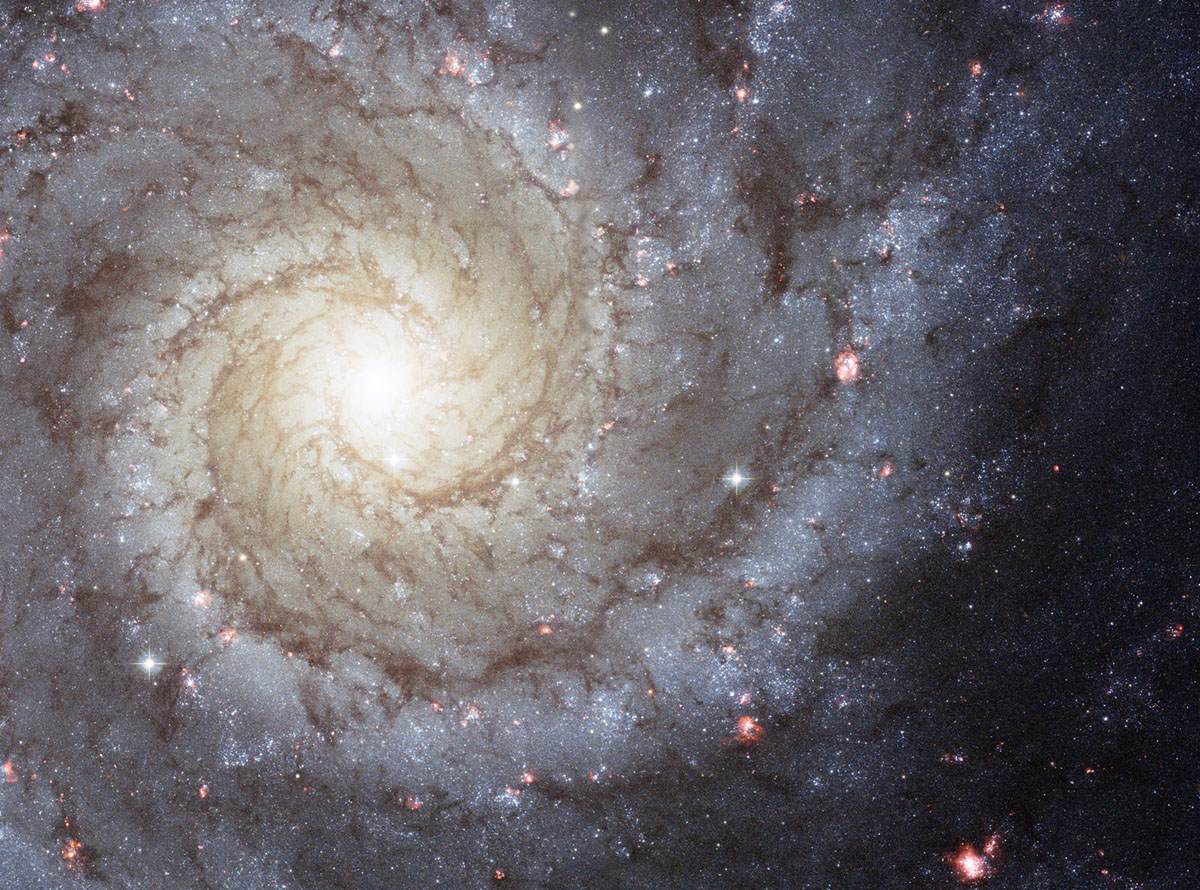
And finally, Messier 74 is a spiral galaxy located 25 million light-years away. The galaxy's spiral arms are dotted with bright pink regions that are giant clouds of hydrogen, which are glowed by intense radiation from young nearby stars. M74 was first discovered in 1780, where it is home to more than 100 billion stars.
Thanks for watching!